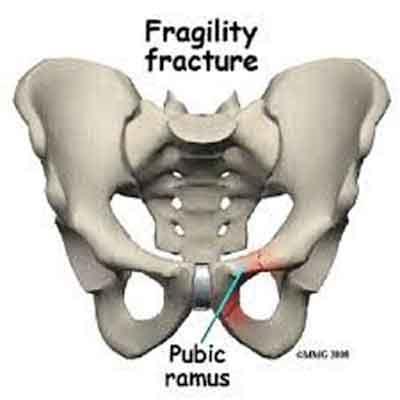- Home
- Editorial
- News
- Practice Guidelines
- Anesthesiology Guidelines
- Cancer Guidelines
- Cardiac Sciences Guidelines
- Critical Care Guidelines
- Dentistry Guidelines
- Dermatology Guidelines
- Diabetes and Endo Guidelines
- Diagnostics Guidelines
- ENT Guidelines
- Featured Practice Guidelines
- Gastroenterology Guidelines
- Geriatrics Guidelines
- Medicine Guidelines
- Nephrology Guidelines
- Neurosciences Guidelines
- Obs and Gynae Guidelines
- Ophthalmology Guidelines
- Orthopaedics Guidelines
- Paediatrics Guidelines
- Psychiatry Guidelines
- Pulmonology Guidelines
- Radiology Guidelines
- Surgery Guidelines
- Urology Guidelines
Suspect, detect and protect: Revised AAOS position statement focuses on preventing subsequent fragility fractures

Physicians should proactively screen, monitor, and, if necessary, assist in getting treatment for elderly and other at-risk patients for osteoporosis following an initial bone fracture to prevent subsequent fractures, according to a revi...
Physicians should proactively screen, monitor, and, if necessary, assist in getting treatment for elderly and other at risk patients for osteoporosis following an initial bone fracture to prevent subsequent fractures, according to a revised position statement approved by the American Academy of Orthopaedic Surgeons (AAOS) Board of Directors.
In the U.S., an estimated 44 million people have osteoporosis and another 10 million are at risk for the disease which causes progressive bone loss and increased fracture risk. One in two women and one in four men older than age 50 years will sustain a bone fracture caused by osteoporosis. These potentially debilitating injuries include fractures of the hip, spine, wrist, arm or leg, often occurring from a fall.
A bone fracture is often the first sign of the disease which develops slowly with no other symptoms. An osteoporosis diagnosis requires a bone mineral density (BMD) test. Treatment can include medication, weight-bearing exercise, and/or vitamin D, calcium or estrogen supplements.
“Assessment tools to predict risk for a second fragility fracture are available, and interventions to treat patients at risk of a subsequent fracture are cost effective,” said David D. Teuscher, MD, chair of the AAOS Task Force on Fragility Fractures. “And yet the overwhelming majority of these patients are not effectively treated to prevent a second fragility fracture. If you don’t suspect osteoporosis, you won’t detect it and can’t protect against the risk of future fractures.”
"Orthopaedic Care of Patients with Fragility Fractures" was created in conjunction with the American Orthopaedic Association (AOA), the Orthopaedic Trauma Association (OTA) and the International Geriatric Fracture Society (IGFS).
The statement recommends the screening and monitoring of patients who present to an Emergency Department, primary care physician or orthopaedic surgeon’s office for osteoporosis and subsequent fracture risk. In addition, “best practice” information on osteoporosis and fragility fracture diagnosis and treatment the Academy’s hip fracture and osteoporosis Clinical Practice Guidelines (CPGs) and Appropriate Use Criteria (AUCs) and related Performance Measures (PMs), IGFS’s Critical Care Pathways, and AOA’s “Own the Bone” program should be distributed and established as standard of care.
In addition, the statement recommends:
- Developing and implementing data registries that track the crucial processes of care, patient demographics and outcomes related to fractures.
- Disseminating educational materials to orthopaedic surgeons to help them better identify at-risk patients.
- Continuing to work with the Centers for Medicare and Medicaid Services (CMS) to ensure reimbursement for the unique evaluation, treatment and monitoring of osteoporosis patients required to prevent subsequent, debilitating fractures.
“We believe it’s our responsibility to take the lead on this issue, and through this position statement, we have a tremendous opportunity to vastly improve patient care in this arena,” said Dr. Teuscher.

Disclaimer: This site is primarily intended for healthcare professionals. Any content/information on this website does not replace the advice of medical and/or health professionals and should not be construed as medical/diagnostic advice/endorsement or prescription. Use of this site is subject to our terms of use, privacy policy, advertisement policy. © 2020 Minerva Medical Treatment Pvt Ltd